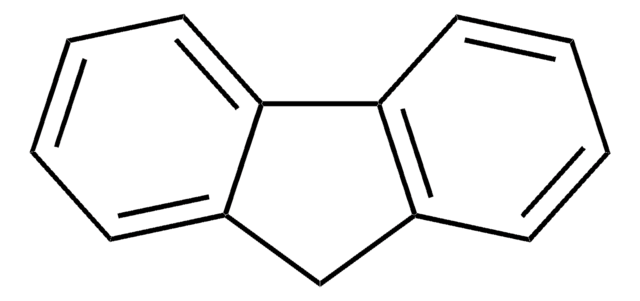59300
2-Propanol
≥99.8% (GC), ACS reagent
Sinónimos:
Alcohol sec-propílico, Alcohol isopropílico, IPA, Isopropanol
About This Item
Productos recomendados
product name
2-Propanol, puriss. p.a., ACS reagent, ≥99.8% (GC)
grade
ACS reagent
puriss. p.a.
vapor density
2.1 (vs air)
vapor pressure
33 mmHg ( 20 °C)
44 mmHg ( 25 °C)
assay
≥99.8% (GC)
form
liquid
autoignition temp.
750 °F
expl. lim.
2.0-12.7 %, 93 °C
impurities
aldehyde, in accordance
substances darkened by H2SO4, in accordance
≤0.00017% free alkali (as NH3)
≤0.002% free acid (as C2H5COOH)
≤0.1% water
evapn. residue
≤0.001%
refractive index
n20/D 1.377 (lit.)
n20/D 1.378
pH
7.0 (20 °C)
bp
82 °C (lit.)
mp
−89.5 °C (lit.)
density
0.785 g/mL at 20 °C
0.785 g/mL at 25 °C (lit.)
cation traces
Al: ≤0.5 mg/kg
Ba: ≤0.1 mg/kg
Bi: ≤0.1 mg/kg
Ca: ≤0.5 mg/kg
Cd: ≤0.05 mg/kg
Co: ≤0.02 mg/kg
Cr: ≤0.02 mg/kg
Cu: ≤0.02 mg/kg
Fe: ≤0.1 mg/kg
K: ≤0.5 mg/kg
Li: ≤0.1 mg/kg
Mg: ≤0.1 mg/kg
Mn: ≤0.02 mg/kg
Mo: ≤0.1 mg/kg
Na: ≤1 mg/kg
Ni: ≤0.02 mg/kg
Pb: ≤0.1 mg/kg
Sr: ≤0.1 mg/kg
Zn: ≤0.1 mg/kg
SMILES string
CC(C)O
storage temp.
room temp
InChI
1S/C3H8O/c1-3(2)4/h3-4H,1-2H3
InChI key
KFZMGEQAYNKOFK-UHFFFAOYSA-N
¿Está buscando productos similares? Visita Guía de comparación de productos
General description
Other Notes
The article number 59300-6X1L will be discontinued. Please order the single bottle 59300-1L which is physically identical with the same exact specifications.
greener alternative product
signalword
Danger
hcodes
Hazard Classifications
Eye Irrit. 2 - Flam. Liq. 2 - STOT SE 3
target_organs
Central nervous system
Storage Class
3 - Flammable liquids
wgk_germany
WGK 1
flash_point_f
53.6 °F - closed cup
flash_point_c
12.0 °C - closed cup
Certificados de análisis (COA)
Busque Certificados de análisis (COA) introduciendo el número de lote del producto. Los números de lote se encuentran en la etiqueta del producto después de las palabras «Lot» o «Batch»
¿Ya tiene este producto?
Encuentre la documentación para los productos que ha comprado recientemente en la Biblioteca de documentos.
Los clientes también vieron
Nuestro equipo de científicos tiene experiencia en todas las áreas de investigación: Ciencias de la vida, Ciencia de los materiales, Síntesis química, Cromatografía, Analítica y muchas otras.
Póngase en contacto con el Servicio técnico



